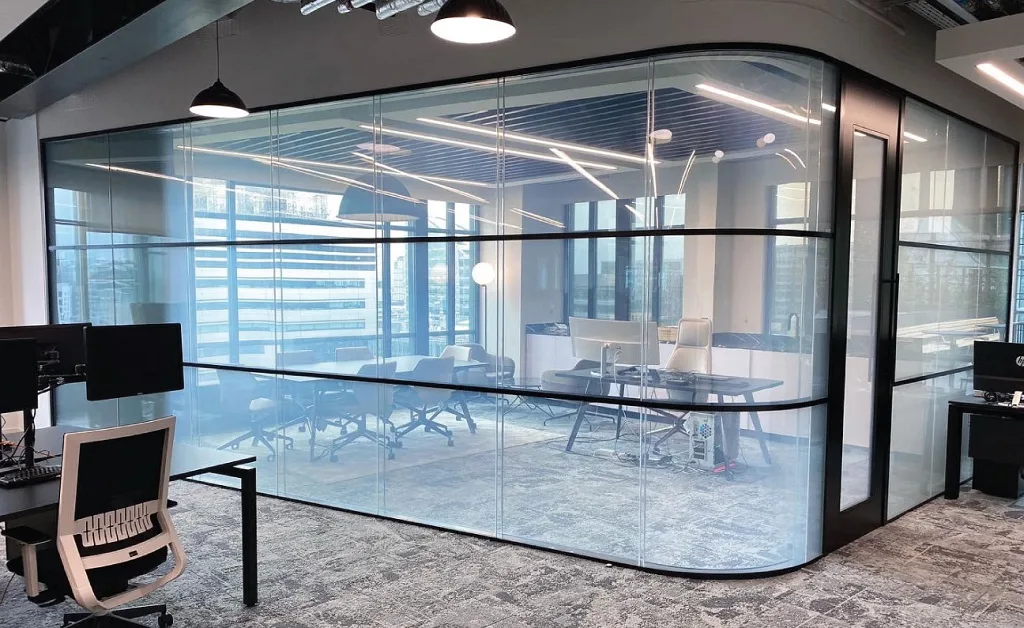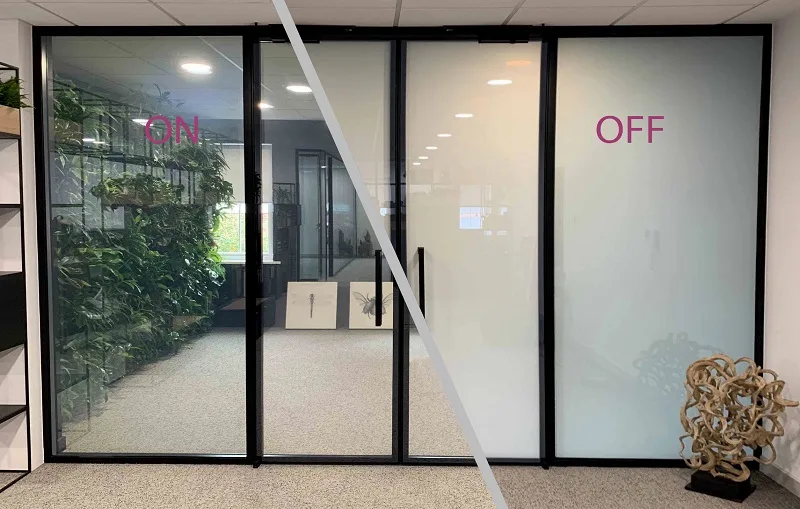Smart glass technology, emerging prominently in the early 21st century, incorporates electronically adjustable transparency to create dynamic environments. It initially found its niche in high-end architecture and automotive designs, allowing for an on-demand switch between transparency and privacy with the application of an electrical charge. This technology leverages materials such as electrochromic, photochromic, thermochromic, and suspended particle devices, evolving rapidly to cater to a broader market.
Electrochromic Smart Glass
Among these, electrochromic smart glass has gained particular prominence due to its ability to adjust its light transmission properties without altering window aesthetics. This variant of smart glass is composed of a conductive glass sandwich, filled with a color-changing electrochromic material. When a voltage is applied, the material changes its opacity, providing control over heat and light entry. This adaptability makes it a favoured choice for energy-efficient building strategies, contributing to significant reductions in heating, ventilation, and air conditioning costs.
The Main Purpose of Smart Glass
Smart glass technology primarily aims to enhance privacy and energy efficiency in various settings. By allowing users to control the amount of light and heat passing through the glass, it significantly reduces reliance on climate control systems and artificial lighting, making it a green technology solution. The fundamental appeal of smart glass lies in its capacity to provide instant privacy while maintaining natural light, catering to both residential and commercial markets.
Benefits of Smart Glass in Building Environments
Moreover, the visual and thermal comfort provided by smart glass systems can substantially improve the productivity and well-being of occupants in any environment. They also hold the potential to integrate with smart home systems, offering automated adjustments based on time of day or lighting conditions, pushing the boundaries of what’s possible in modern building technologies.
Current Applications of Smart Glass
Smart glass is already revolutionizing several industries. In the automotive sector, it’s used for sunroofs and windows that adjust their transparency to enhance passenger comfort while minimizing UV exposure and heat gain. In healthcare, smart glass solutions are employed in hospitals to instantly switch between transparency and privacy, enhancing patient comfort while maintaining necessary visibility for staff. Furthermore, in the corporate world, they are increasingly utilized in office buildings to create dynamic partitions and exterior walls that adapt to lighting conditions, maximizing natural light usage while ensuring privacy.
Another key application is in the retail sector where storefronts employ smart glass to shift from transparent to opaque, securing products after hours without compromising on aesthetic appeal. The versatility and functionality of smart glass also extend to residential applications, where it’s used in windows, skylights, and interior doors, transforming how spaces are used and perceived.

Future Potential and Expansion
The potential for smart glass technology extends beyond its current applications. It can revolutionize how residential properties are designed, offering seamless indoor-outdoor living without privacy trade-offs. In public transportation, smart glass can be used to adjust window transparency on buses and trains, enhancing passenger experiences while reducing energy costs. Moreover, its application in public venues like restaurants and shopping centres can transform customer experiences, offering privacy on demand without the need for physical barriers.
In education, smart classrooms equipped with smart glass can dynamically alter their transparency to reduce glare and optimize lighting for better learning environments. The possibilities for this technology continue to grow as advancements in materials and lower costs allow more sectors to adopt this innovative solution.
Future of Smart Glass
Discussing the future of smart glass, it is more than just a temporary trend; it is poised to be a mainstay in various industries. Its potential to improve energy efficiency, enhance privacy, and integrate seamlessly with other smart technologies makes it a promising investment for future development. As technology advances and becomes more cost-effective, smart glass could become ubiquitous in modern architecture and beyond, redefining our interaction with the built environment.
Smart glass represents a convergence of functionality and aesthetics, making it a cornerstone of future sustainable building practices. Its ability to adapt to both user needs and environmental conditions positions it as an essential technology for the future, promising to keep evolving in its capabilities and applications.

